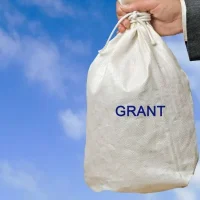Government grants and subsidies represent a significant source of funding for various organizations, particularly nonprofits and educational institutions. These funds are typically allocated to support initiatives that align with public policy goals, such as improving community welfare, enhancing education, and fostering economic development. The application process for government grants can be rigorous, often requiring detailed proposals that outline the intended use of funds, the target population, and measurable outcomes.
However, the potential benefits of securing such funding can be substantial, providing organizations with the financial resources necessary to implement impactful programs. In addition to traditional grants, governments at various levels also offer subsidies that can help offset operational costs or support specific projects. These subsidies may be available for a range of activities, from environmental conservation efforts to public health initiatives.
Organizations seeking these funds must stay informed about the eligibility criteria and application deadlines, as these can vary widely depending on the funding source. By leveraging government grants and subsidies effectively, organizations can enhance their capacity to serve their communities and achieve their missions.
Corporate Training Programs
Enhancing Operational Effectiveness
By partnering with corporations, nonprofits can access valuable training resources and expertise that can significantly enhance their operational effectiveness. Moreover, corporate training programs often include funding opportunities for organizations that align with the corporation’s values or mission. This can take the form of direct financial support or in-kind contributions such as training materials or access to facilities.
Tailored Training Initiatives
Nonprofits can benefit from these partnerships by developing tailored training initiatives that address both community needs and corporate objectives. Engaging with corporate partners in this way not only provides financial support but also fosters a sense of collaboration that can lead to long-term relationships and additional funding opportunities.
Long-term Relationships and Funding Opportunities
Through these partnerships, nonprofits can develop a sense of collaboration with corporate partners, leading to long-term relationships and additional funding opportunities. By working together, nonprofits and corporations can create a mutually beneficial partnership that drives positive change in the community.
Nonprofit Organization Grants
Nonprofit organization grants are essential for sustaining the operations and programs of charitable entities. These grants can come from various sources, including foundations, government agencies, and individual donors. Each grantor typically has specific priorities and guidelines that organizations must adhere to when applying for funding.
Understanding these nuances is crucial for nonprofits seeking to secure grants that align with their mission and objectives. To increase their chances of success, nonprofits should invest time in crafting compelling grant proposals that clearly articulate their mission, the need for funding, and the anticipated impact of their programs. A well-structured proposal should include a detailed budget, a timeline for implementation, and measurable outcomes that demonstrate accountability.
Additionally, building relationships with grantors can enhance an organization’s credibility and increase the likelihood of receiving funding. By actively engaging with potential funders through networking events or informational meetings, nonprofits can gain insights into their priorities and tailor their proposals accordingly.
Educational Institution Scholarships
Scholarships offered by educational institutions play a crucial role in promoting access to education for students from diverse backgrounds. These scholarships can be merit-based or need-based and are designed to alleviate the financial burden of tuition fees, allowing students to focus on their studies without the stress of financial constraints. Educational institutions often allocate a portion of their budgets to fund scholarships, which can significantly impact enrollment rates and student success.
In addition to institutional scholarships, many educational organizations collaborate with external donors or foundations to create scholarship funds aimed at specific populations or fields of study. For instance, scholarships may be established for underrepresented groups in STEM fields or for students pursuing careers in public service. By actively promoting these scholarship opportunities and providing clear application guidelines, educational institutions can attract a diverse pool of applicants while fulfilling their commitment to equity and inclusion in education.
Vocational Rehabilitation Funding
Vocational rehabilitation funding is essential for individuals with disabilities seeking to enter or re-enter the workforce. This funding is typically provided through government programs designed to assist individuals in overcoming barriers to employment. Vocational rehabilitation services may include job training, counseling, job placement assistance, and support for necessary accommodations in the workplace.
Organizations that specialize in vocational rehabilitation play a critical role in connecting individuals with these resources. To access vocational rehabilitation funding, organizations must demonstrate their capacity to provide effective services that lead to successful employment outcomes for individuals with disabilities. This often involves collaborating with state agencies and adhering to specific guidelines set forth by funding bodies.
By focusing on measurable results and maintaining strong relationships with stakeholders, organizations can secure ongoing funding to support their vocational rehabilitation efforts.
Industry-Specific Training Grants
Industry-specific training grants are designed to address the unique needs of particular sectors by providing funding for specialized training programs. These grants are often offered by government agencies, foundations, or industry associations that recognize the importance of a skilled workforce in driving economic growth and innovation.
Understanding Industry Trends and Workforce Demands
Organizations seeking these grants must demonstrate an understanding of industry trends and workforce demands while outlining how their training programs will address skill gaps.
Securing Funding through Collaboration
To successfully secure industry-specific training grants, organizations should engage with industry stakeholders to identify pressing needs and develop training curricula that align with those needs. Collaborating with businesses can also enhance the credibility of training programs and increase the likelihood of securing funding.
Creating Impactful Training Initiatives
By focusing on practical skills development and fostering partnerships within the industry, organizations can create impactful training initiatives that benefit both participants and employers.
Workforce Development Board Funding
Workforce Development Boards (WDBs) play a pivotal role in coordinating workforce development efforts at the local level. These boards are responsible for overseeing federal and state funding allocated for workforce development initiatives, including job training programs, career counseling services, and employment placement assistance. Organizations seeking funding from WDBs must align their proposals with local workforce development strategies and demonstrate how their programs will contribute to regional economic growth.
To effectively engage with WDBs, organizations should stay informed about local labor market trends and workforce needs. This knowledge allows them to tailor their proposals to address specific challenges faced by job seekers in their communities. Additionally, building relationships with WDB members can provide valuable insights into funding priorities and application processes.
By actively participating in local workforce development discussions and initiatives, organizations can position themselves as key players in enhancing workforce readiness.
Professional Association Scholarships
Professional associations often offer scholarships aimed at supporting individuals pursuing careers within specific fields or industries. These scholarships are typically funded through membership dues or donations from industry stakeholders who recognize the importance of fostering new talent within their professions. By providing financial assistance to students or early-career professionals, associations contribute to the development of a skilled workforce while promoting diversity within their fields.
To maximize the impact of professional association scholarships, organizations should actively promote these opportunities within their networks and encourage eligible candidates to apply. Additionally, associations may consider establishing mentorship programs alongside scholarships to provide recipients with guidance and support as they navigate their educational journeys. By fostering connections between scholarship recipients and established professionals in the field, associations can enhance the overall effectiveness of their scholarship programs while contributing to the long-term success of their industries.
In conclusion, understanding the various funding opportunities available through government grants, corporate training programs, nonprofit organization grants, educational institution scholarships, vocational rehabilitation funding, industry-specific training grants, workforce development board funding, and professional association scholarships is essential for organizations seeking financial support. By strategically navigating these avenues and crafting compelling proposals that align with funders’ priorities, organizations can secure the resources necessary to implement impactful programs that benefit their communities and advance their missions.








































